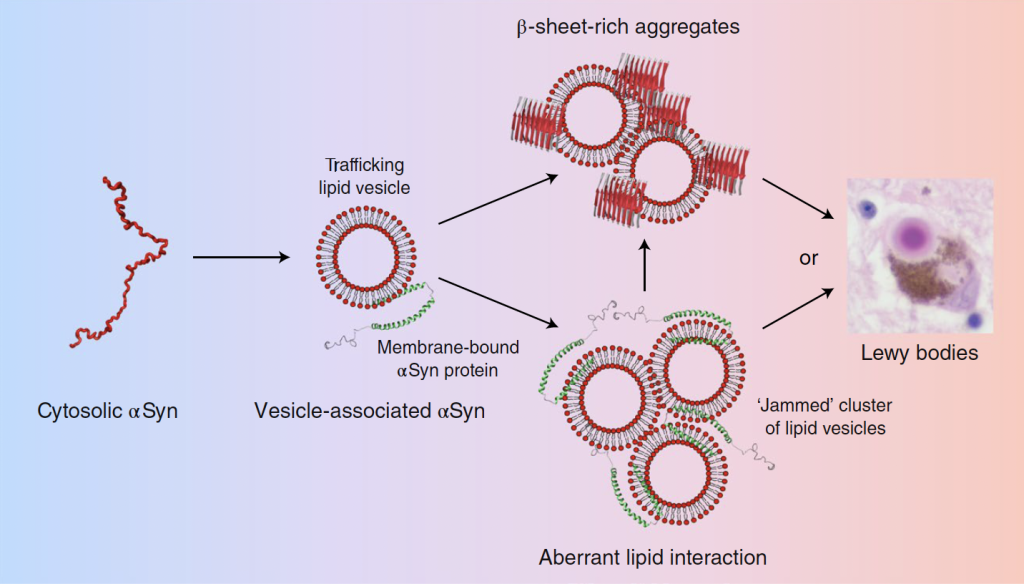We study how brain cells transition from healthy physiology into early pathology by visualizing molecular and nanoscale events directly in their native environment.
Through cryo-electron tomography of intact neurons and cell models of disease, quantitative biophysics, technology development, and multimodal imaging, we investigate how α-synuclein, tau, and related proteins assemble, remodel cellular compartments, and interact with small molecules.
Our work bridges molecular mechanisms with in situ neuronal structure to identify the earliest intervention points in neurodegenerative disease.
Neurons begin to fail long before symptoms of neurodegenerative disease appear. To understand these early transitions, we visualize and dissect the molecular, mesoscale, and organellar events that destabilize neuronal systems in their native environments.
We established cryo-ET workflows that preserve intact neurites in a fully hydrated state (Fig. 1), enabling direct visualization of cytoskeletal, membrane, and organelle architecture without chemical distortion.
To extend this approach toward physiologically organized networks, we developed a compartmentalized neuronal co-culture platform compatible with high-pressure freezing (Fig. 2), linking live imaging, controlled connectivity, and cryo-based ultrastructural analysis.
Structural work on chaperonin–substrate interactions demonstrated that TRiC modulates mutant huntingtin aggregation through fibril-tip capping and oligomer encapsulation (Fig. 3), establishing a mechanistic framework in which quality-control machinery exerts stage-specific structural effects on aggregation trajectories.
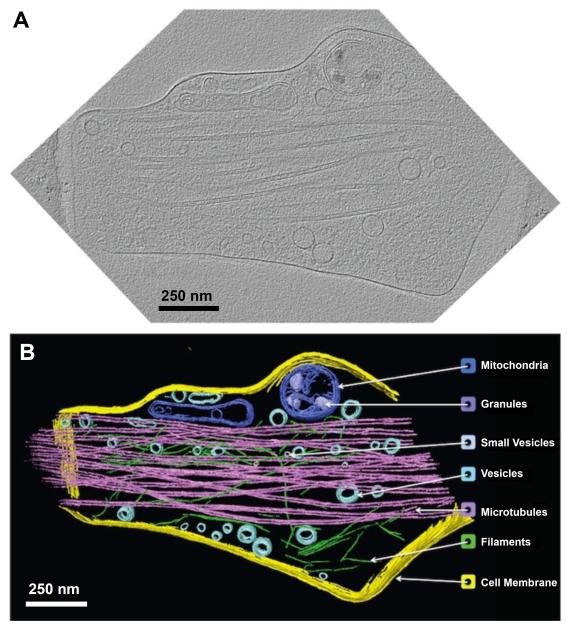 Fig. 1. Cryo-electron tomogram of vitrified primary neurites, showing preserved cytoskeletal, membrane, and organelle architecture in a near-native state.
Fig. 1. Cryo-electron tomogram of vitrified primary neurites, showing preserved cytoskeletal, membrane, and organelle architecture in a near-native state. 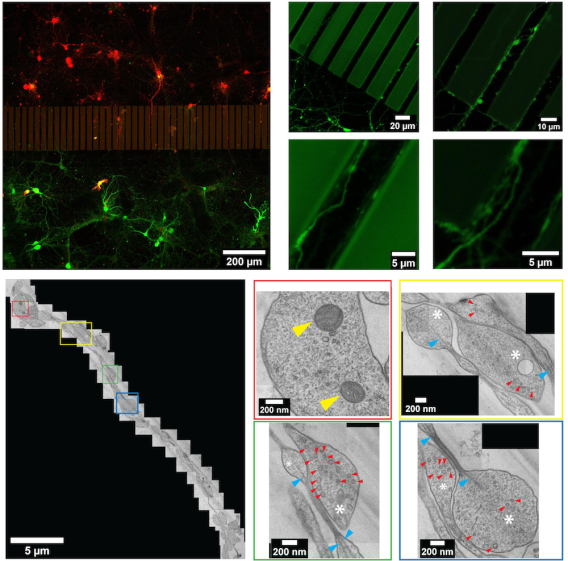 Fig. 2. Compartmentalized neuronal co-culture platform compatible with high-pressure freezing, enabling defined neuronal connectivity and ultrastructural imaging of reconstructed networks.
Fig. 2. Compartmentalized neuronal co-culture platform compatible with high-pressure freezing, enabling defined neuronal connectivity and ultrastructural imaging of reconstructed networks. 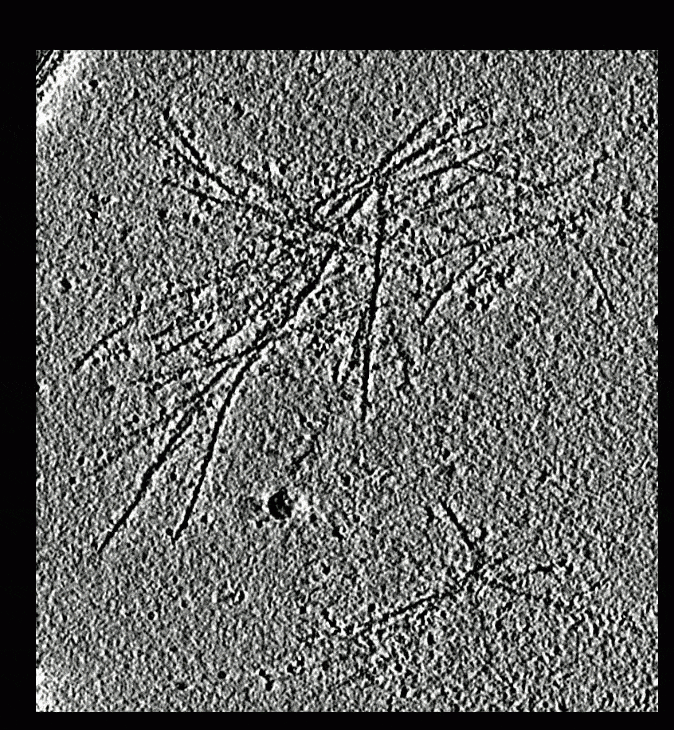 Fig. 3. Cryo-ET reconstruction of TRiC interacting with mutant huntingtin, highlighting fibril-tip capping and oligomer encapsulation.
Fig. 3. Cryo-ET reconstruction of TRiC interacting with mutant huntingtin, highlighting fibril-tip capping and oligomer encapsulation.
Our biophysical and tomographic investigation of α-synuclein identified the acuna—a condensed supramolecular intermediate with defined internal organization (Fig. 4)—demonstrating that α-synuclein nucleates through a mesoscale, phase-organized intermediate that templates fibril emergence.
Multimodal imaging of human Parkinson’s disease tissue revealed that Lewy bodies and neurites are membrane- and organelle-enriched compartments with heterogeneous filament content (Fig. 5), reframing Lewy pathology as reorganized intracellular architecture rather than homogeneous fibrillar aggregates.
Finally, our cryo-EM structure of PHFs bound to the PET ligand MK-6240 defined ligand binding at atomic resolution (Fig. 6), providing mechanistic insight into PET signal generation and enabling structure-guided development of next-generation compounds.
We operate on a unified framework in which molecular assembly, mesoscale condensation, organellar remodeling, and small-molecule engagement are interrogated within a single structural continuum. Our goal is to identify the earliest structural inflection points that destabilize neurons and to develop strategies to target these events before irreversible pathology occurs.
 Fig. 4. Three-dimensional architecture of the α-synuclein acuna, a condensed mesoscale intermediate visualized by AFM and cryo-ET.
Fig. 4. Three-dimensional architecture of the α-synuclein acuna, a condensed mesoscale intermediate visualized by AFM and cryo-ET. 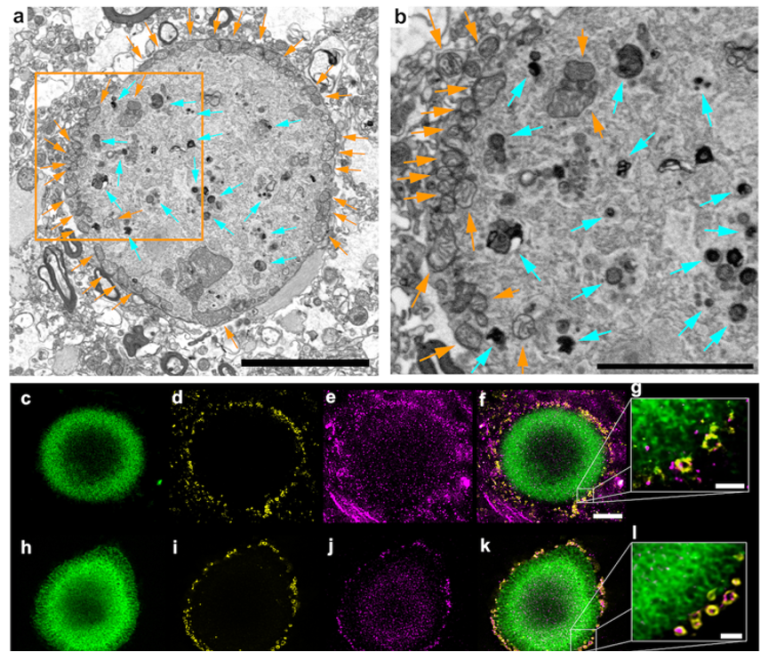 Fig. 5. Electron tomography and STED imaging of human Lewy pathology revealing membrane-rich and organelle-dense compartments with heterogeneous α-synuclein filament content.
Fig. 5. Electron tomography and STED imaging of human Lewy pathology revealing membrane-rich and organelle-dense compartments with heterogeneous α-synuclein filament content. 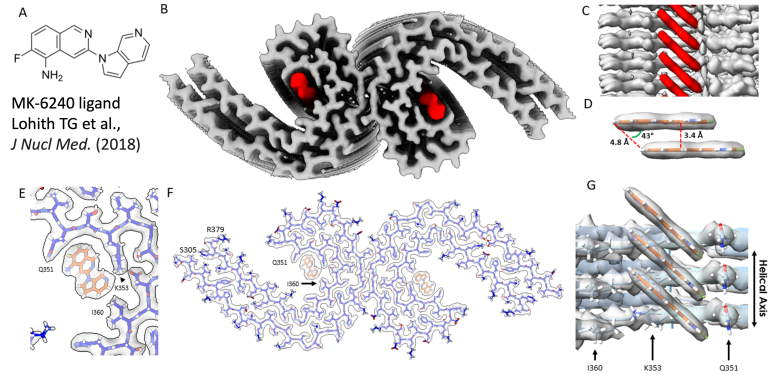 Fig. 6. Cryo-EM structure of tau paired-helical filaments from Alzheimer's brain bound to PET ligand MK-6240, showing ligand placement within the filament cleft and its atomic contacts.
Fig. 6. Cryo-EM structure of tau paired-helical filaments from Alzheimer's brain bound to PET ligand MK-6240, showing ligand placement within the filament cleft and its atomic contacts. 